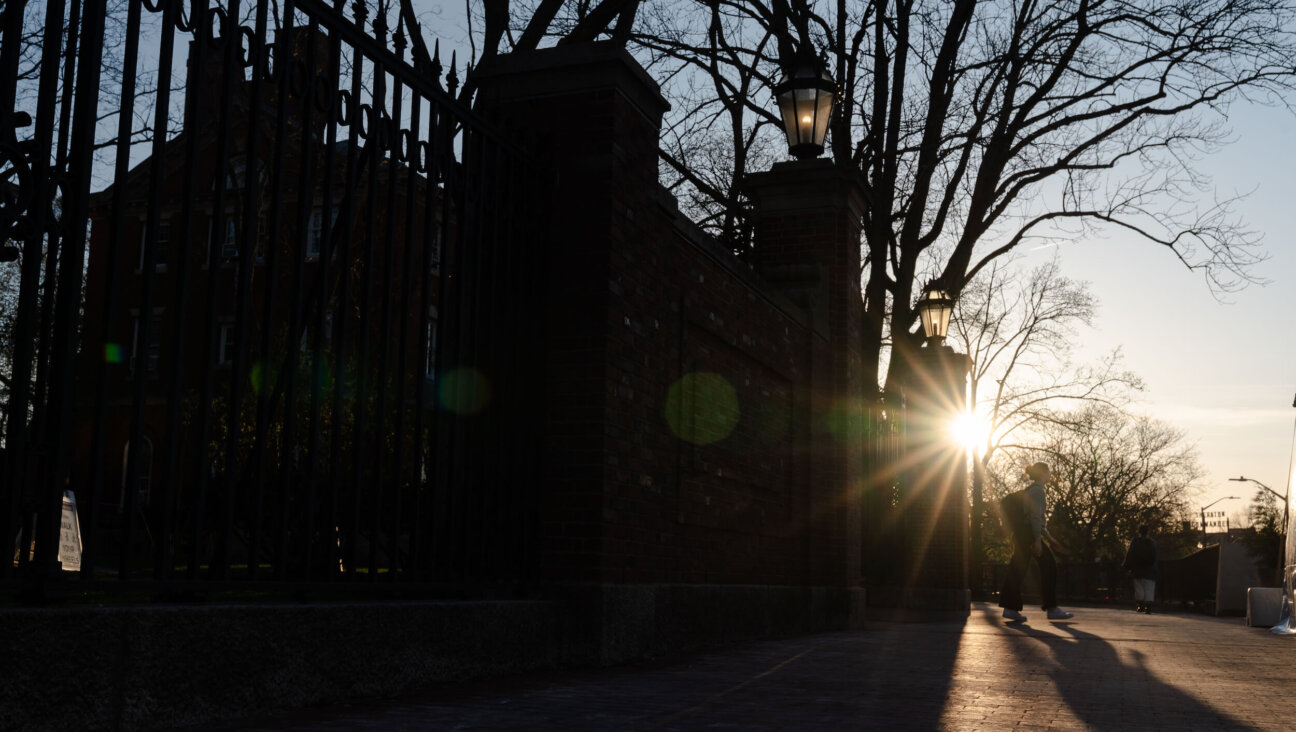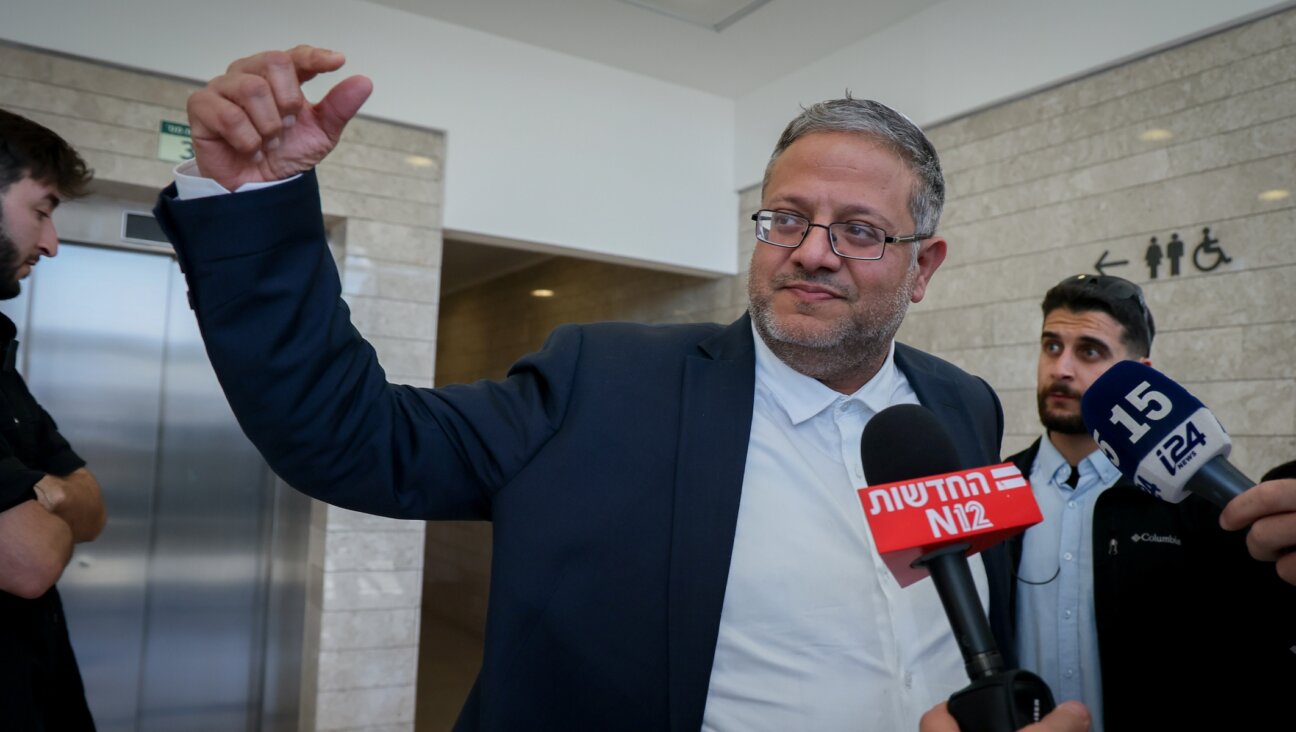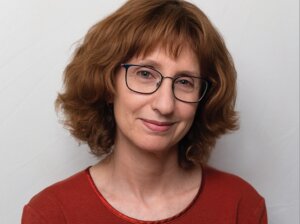Northern Exposure: Mameloshn’s Unexpected Fate – in Sweden
In the weeks leading up to Sweden’s national election this month, the government put out public service announcements in the press, encouraging its citizens to vote. But one feature was hardly standard issue: The bulletins informed the readers how to get voting instructions in Yiddish.
The bulletins served as a reminder of — or, more likely for most, an introduction to — a very unlikely aspect of this Northern European society: Yiddish enjoys official minority-language status in Sweden. (The only other two countries where Yiddish has official status are the Netherlands and Moldova.)
Out of a population of 9 million, Sweden has 18,000 Jews. And if one takes into account both those who speak it fluently and those who have a passive understanding of it, Yiddish speakers likely number fewer than 4,000. Besides the instructions on how to vote, the government has issued a translation of the policies regarding national minority languages, and this past March it translated Sweden’s national action plan for human rights.
Some Jewish residents of Sweden find it ironic that one of the only countries in the world to confer official status on Yiddish is known for pursuing one of the most anti-Israel policies in Europe. Last June, for example, Sweden’s state-owned alcohol retail monopoly, Systembolaget, in consultation with the Swedish foreign ministry, labeled Israeli Golan and Yarden wines as “made in Israel-occupied Syrian territories,” according to a report in The Jerusalem Post. Two months earlier, the Post added, Sweden pulled out of a European military exercise because of Israeli participation. “It’s great that the government has decided to help Yiddish, but it’s too little, too late,” said Dr. Salomon Schulman, a pediatrician and writer in Lund. “Those who speak Yiddish today are mostly in their 80s, living in nursing homes or alone at home, and don’t take advantage of the Yiddish cultural institutions.”
Schulman, who authored a Swedish history of Yiddish culture in Eastern Europe called “Jiddischland” (Bokforlaget Nya Doxa, 1996) along with other books about Yiddish culture, remembers well the negative attitude toward Yiddish as recently as the 1990s, when the government started researching which minority languages to choose for official status. “The Swedes didn’t want to recognize Yiddish, because they were against Israel and considered the Jews bourgeois. And the Jews didn’t stand up for Yiddish, because they thought that Yiddish wasn’t a language at all,” he said. “The Yiddish speakers who immigrated to Sweden after the Holocaust could have spoken up, but they were simple tailors and shoemakers, and had no position or power here; while the Swedish Jews, who did have the prestige, were ashamed of the East European Jews and of their language.”
Susanne Sznajderman-Rytz, linguist and instructor of business Swedish in Boras, was the driving force behind the government’s decision to recognize Yiddish in 2000 as one of five minority languages. The others selected were Finnish, Meankieli, Sami and Romani (the language of the Gypsies). In order to earn recognition, a minority language had to meet three criteria: The language had to be spoken by a group that considers itself separate from the general population; the group that speaks the language had to share a unique cultural heritage, and the language had to have originated in Europe and been used in Sweden for at least 100 years. For this reason, Arabic and Persian — languages heard much more in Sweden today than Yiddish — were not included.
Each of the five languages is entitled to government funding. But in order to get it, its advocates must submit an annual proposal, subject to government approval. Until now, the Yiddish sector has received $100,000 annually.
Sznajderman-Rytz had been told that the funding would be even higher this coming year, although the exact amount is still unclear.
Part of the funding goes to maintain Jewish libraries in Malmo, Gothenburg and Stockholm, as well as the Judaica library in Gothenburg University, all of which include a Yiddish section; part of it goes to the three Jewish publishing houses in Sweden, and part to an annual Yiddish seminar.
One such seminar took place two weeks ago at Bommersvik College. The two-day event, which was conducted entirely in Yiddish, attracted 60 participants, most of them children of Holocaust survivors. Joseph Sherman, an Oxford University professor, gave a series of lectures comparing the works of Isaac Bashevis Singer, Dovid Bergelson, I. J. Singer and Isaac Meir Dick; and Dutch Jewish singer Shura Lipovski, the most well-known Yiddish singer in Europe, conducted workshops on how to sing Yiddish songs.
“I never dreamed that all of this would ever happen,” Sznajderman-Rytz said. “Now when people suggest establishing full-time radio stations and newspapers for Yiddish, I figure: If we’ve come this far, then this, too, is possible.”
Rukhl Schaechter is a writer and editor with the Forverts, from which this article was adapted.
The Forward is free to read, but it isn’t free to produce

I hope you appreciated this article. Before you go, I’d like to ask you to please support the Forward.
Now more than ever, American Jews need independent news they can trust, with reporting driven by truth, not ideology. We serve you, not any ideological agenda.
At a time when other newsrooms are closing or cutting back, the Forward has removed its paywall and invested additional resources to report on the ground from Israel and around the U.S. on the impact of the war, rising antisemitism and polarized discourse.
This is a great time to support independent Jewish journalism you rely on. Make a Passover gift today!
— Rachel Fishman Feddersen, Publisher and CEO
Most Popular
- 1

News Student protesters being deported are not ‘martyrs and heroes,’ says former antisemitism envoy
- 2

News Who is Alan Garber, the Jewish Harvard president who stood up to Trump over antisemitism?
- 3

Fast Forward Suspected arsonist intended to beat Gov. Josh Shapiro with a sledgehammer, investigators say
- 4

Politics Meet America’s potential first Jewish second family: Josh Shapiro, Lori, and their 4 kids
In Case You Missed It
-

Opinion Why can Harvard stand up to Trump? Because it didn’t give in to pro-Palestinian student protests
-

Culture How an Israeli dance company shaped a Catholic school boy’s life
-

Fast Forward Brooklyn event with Itamar Ben-Gvir cancelled days before Israeli far-right minister’s US trip
-

Culture How Abraham Lincoln in a kippah wound up making a $250,000 deal on ‘Shark Tank’
-
Shop the Forward Store
100% of profits support our journalism
Republish This Story
Please read before republishing
We’re happy to make this story available to republish for free, unless it originated with JTA, Haaretz or another publication (as indicated on the article) and as long as you follow our guidelines.
You must comply with the following:
- Credit the Forward
- Retain our pixel
- Preserve our canonical link in Google search
- Add a noindex tag in Google search
See our full guidelines for more information, and this guide for detail about canonical URLs.
To republish, copy the HTML by clicking on the yellow button to the right; it includes our tracking pixel, all paragraph styles and hyperlinks, the author byline and credit to the Forward. It does not include images; to avoid copyright violations, you must add them manually, following our guidelines. Please email us at [email protected], subject line “republish,” with any questions or to let us know what stories you’re picking up.












